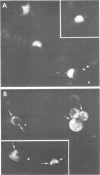Abstract
Specimens containing respiratory tract epithelial cells from infants and children with acute respiratory disease were evaluated by using an indirect immunofluorescence technique with two specific respiratory syncytial virus monoclonal antibodies. One (RS/HN 13-1) was directed against a cell surface viral antigen, and the other (RS/HN 25-2) was directed against viral antigen present in large cytoplasmic inclusions. The same results on presence or absence of respiratory syncytial virus were obtained by cell culture and immunofluorescence in 93% of 252 patients tested adequately by both methods. The sensitivity of indirect immunofluorescence was approximately equal to that of cell culture. A total of 84 specimens were positive for RSV by immunofluorescence; 82 of them were positive with both monoclones, and the remaining 2 were positive only with the monoclone directed against the internal protein. The fluorescence pattern of the latter monoclone was unique and easily recognized. Indirect immunofluorescence testing with monoclonal antibodies to respiratory syncytial virus proved to be a very useful diagnostic technique, and results could be obtained within 4 h of specimen collection.
Full text
PDF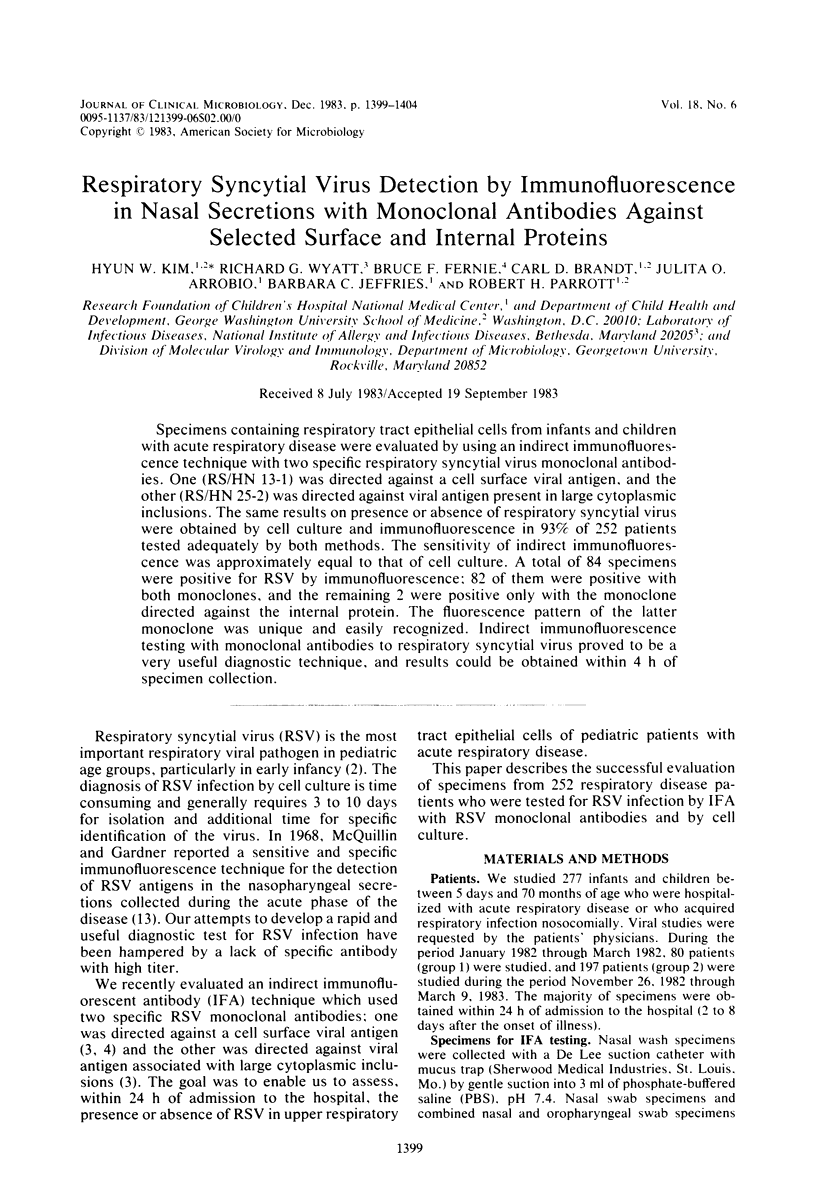
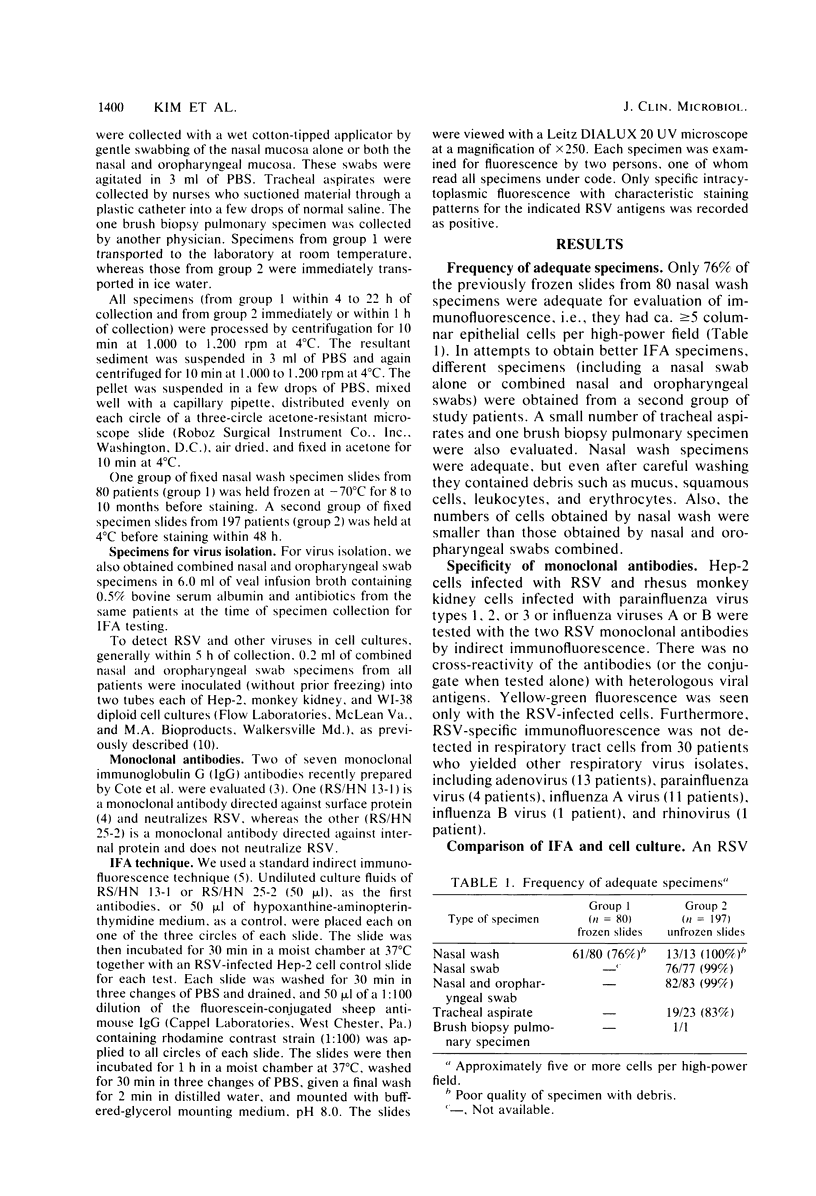
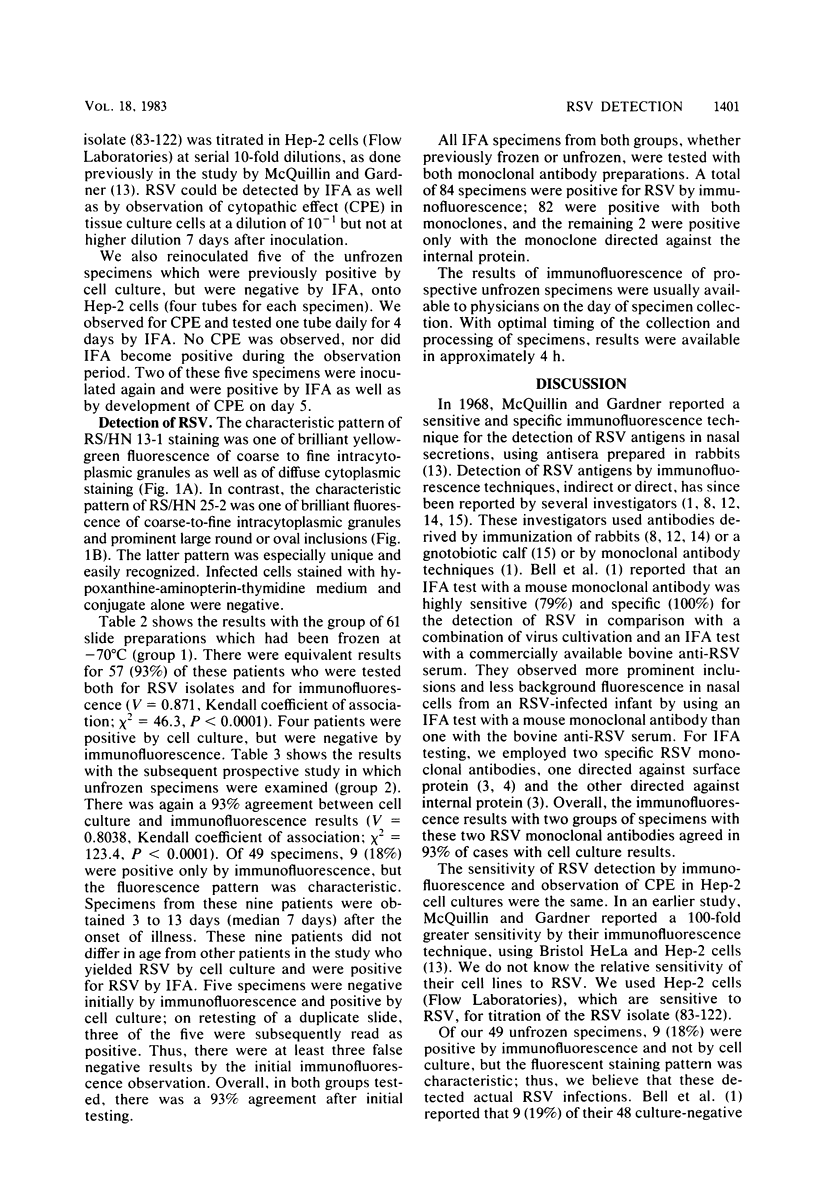
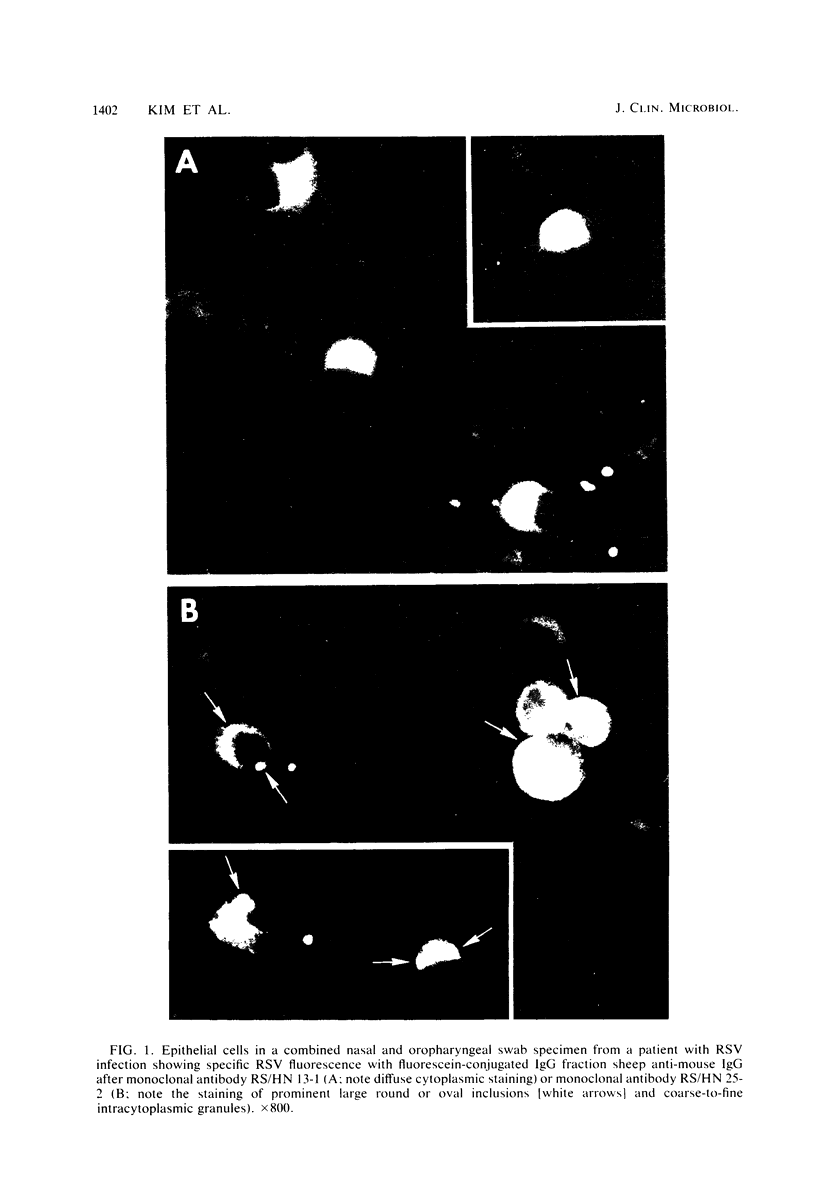
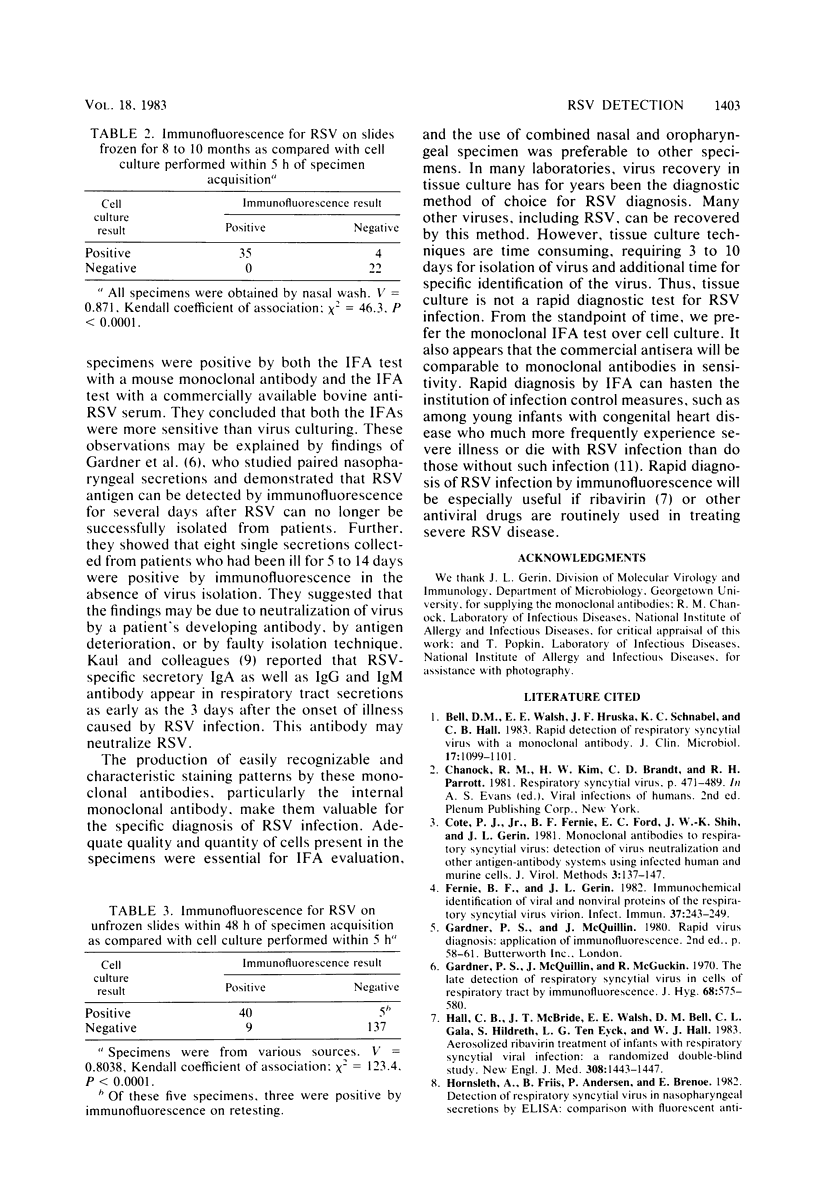
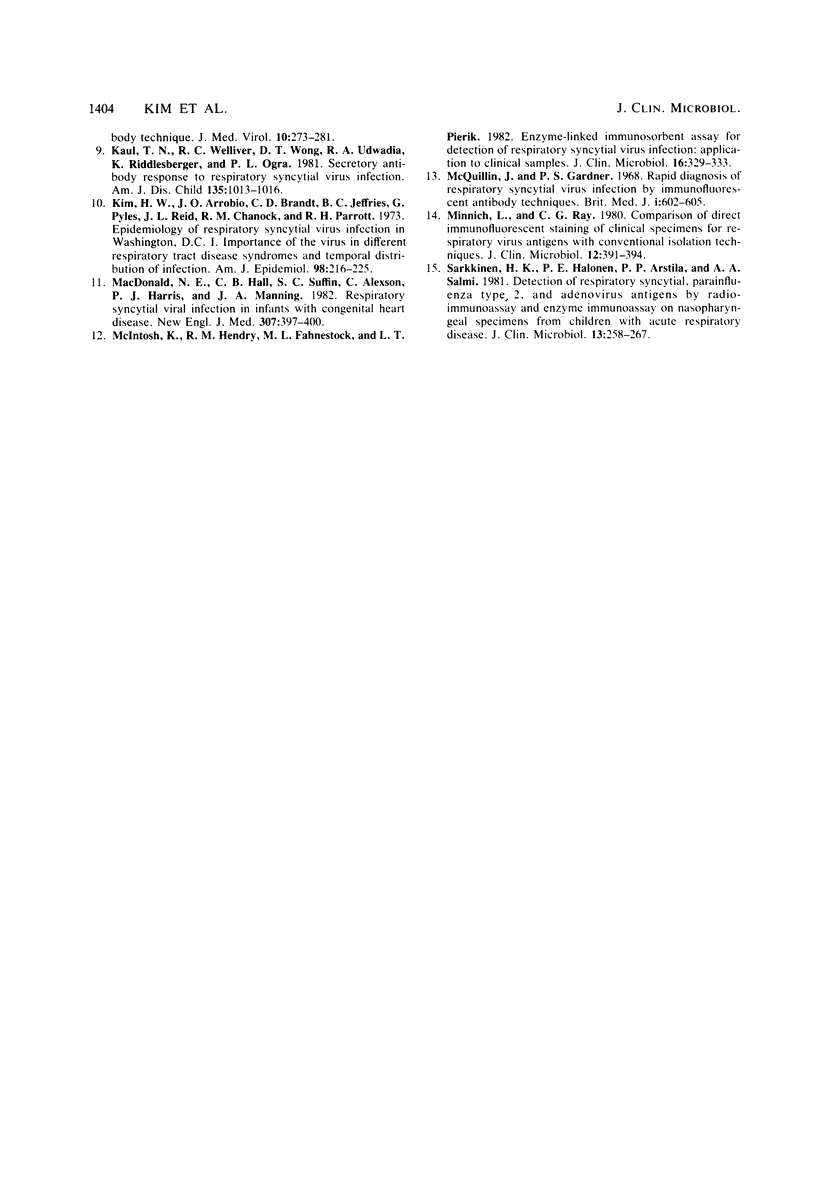
Images in this article
Selected References
These references are in PubMed. This may not be the complete list of references from this article.
- Cote P. J., Jr, Fernie B. F., Ford E. C., Shih J. W., Gerin J. L. Monoclonal antibodies to respiratory syncytial virus: detection of virus neutralization and other antigen-antibody systems using infected human and murine cells. J Virol Methods. 1981 Oct;3(3):137–147. doi: 10.1016/0166-0934(81)90048-3. [DOI] [PubMed] [Google Scholar]
- Fernie B. F., Gerin J. L. Immunochemical identification of viral and nonviral proteins of the respiratory syncytial virus virion. Infect Immun. 1982 Jul;37(1):243–249. doi: 10.1128/iai.37.1.243-249.1982. [DOI] [PMC free article] [PubMed] [Google Scholar]
- Gardner P. S., McQuillin J., McGuckin R. The late detection of respiratory syncytial virus in cells of respiratory tract by immunofluorescence. J Hyg (Lond) 1970 Dec;68(4):575–580. doi: 10.1017/s0022172400042509. [DOI] [PMC free article] [PubMed] [Google Scholar]
- Hall C. B., McBride J. T., Walsh E. E., Bell D. M., Gala C. L., Hildreth S., Ten Eyck L. G., Hall W. J. Aerosolized ribavirin treatment of infants with respiratory syncytial viral infection. A randomized double-blind study. N Engl J Med. 1983 Jun 16;308(24):1443–1447. doi: 10.1056/NEJM198306163082403. [DOI] [PubMed] [Google Scholar]
- Kaul T. N., Welliver R. C., Wong D. T., Udwadia R. A., Riddlesberger K., Ogra P. L. Secretory antibody response to respiratory syncytial virus infection. Am J Dis Child. 1981 Nov;135(11):1013–1016. doi: 10.1001/archpedi.1981.02130350017007. [DOI] [PubMed] [Google Scholar]
- Kim H. W., Arrobio J. O., Brandt C. D., Jeffries B. C., Pyles G., Reid J. L., Chanock R. M., Parrott R. H. Epidemiology of respiratory syncytial virus infection in Washington, D.C. I. Importance of the virus in different respiratory tract disease syndromes and temporal distribution of infection. Am J Epidemiol. 1973 Sep;98(3):216–225. doi: 10.1093/oxfordjournals.aje.a121550. [DOI] [PubMed] [Google Scholar]
- MacDonald N. E., Hall C. B., Suffin S. C., Alexson C., Harris P. J., Manning J. A. Respiratory syncytial viral infection in infants with congenital heart disease. N Engl J Med. 1982 Aug 12;307(7):397–400. doi: 10.1056/NEJM198208123070702. [DOI] [PubMed] [Google Scholar]
- McIntosh K., Hendry R. M., Fahnestock M. L., Pierik L. T. Enzyme-linked immunosorbent assay for detection of respiratory syncytial virus infection: application to clinical samples. J Clin Microbiol. 1982 Aug;16(2):329–333. doi: 10.1128/jcm.16.2.329-333.1982. [DOI] [PMC free article] [PubMed] [Google Scholar]
- McQuillin J., Gardner P. S. Rapid diagnosis of respiratory syncytial virus infection by immunofluorescent antibody techniques. Br Med J. 1968 Mar 9;1(5592):602–605. doi: 10.1136/bmj.1.5592.602. [DOI] [PMC free article] [PubMed] [Google Scholar]
- Minnich L., Ray C. G. Comparison of direct immunofluorescent staining of clinical specimens for respiratory virus antigens with conventional isolation techniques. J Clin Microbiol. 1980 Sep;12(3):391–394. doi: 10.1128/jcm.12.3.391-394.1980. [DOI] [PMC free article] [PubMed] [Google Scholar]
- Sarkkinen H. K., Halonen P. E., Arstila P. P., Salmi A. A. Detection of respiratory syncytial, parainfluenza type 2, and adenovirus antigens by radioimmunoassay and enzyme immunoassay on nasopharyngeal specimens from children with acute respiratory disease. J Clin Microbiol. 1981 Feb;13(2):258–265. doi: 10.1128/jcm.13.2.258-265.1981. [DOI] [PMC free article] [PubMed] [Google Scholar]



